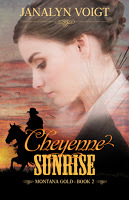Relationship, Relationship, Relationship!
By Guest Authors from Mountain Brook Ink
Mountain Brook Ink publishing focuses on reader relationships and stories of restoration and renewal. We asked some of our authors to share how they connect relationships: relationships between plot and setting, message and story, and author and reader. Here’s what they had to say:
 Kimberly Rose Johnson (The Sleuth’s Miscalculation): Importance of Setting
Kimberly Rose Johnson (The Sleuth’s Miscalculation): Importance of SettingSetting is as important to a story as the characters and the plot. I often choose small towns in which to set my stories, but sometimes the plot requires a city. For example, my book The Reluctant Groom is a modern day marriage of convenience story set in the more believable environment of big city Seattle.
But there is no way The Sleuth’s Miscalculation would work in a big city. The plot revolves around a small town librarian who enjoys solving mysteries and consults for the Sheriff’s Department for non-violent crimes. This story begged to be set in a small town with all the familiar quirks that go with small town life.
Let’s look at settings on television shows. Can you think of an example of where setting was critical to the story? Can you imagine Magnum P.I. being set anyplace but Hawaii, or Castle anyplace but New York City? Those settings enhanced their stories; our settings enhance our books.
In my process, setting is one of the first factors I determine. The very first series I sold was actually based on the setting, and I wrote the story around it. I hope this has encouraged you to have fun with setting and use it to enhance your next project.
 Angela Ruth Strong (RESORT TO LOVE series): Power of Setting
Angela Ruth Strong (RESORT TO LOVE series): Power of SettingThe novel that kickstarted my career was released as part of the Love Finds You line. I held Costco book-signings, received a hardback edition, and had the novel optioned for film. But the most important thing I learned? The power of setting.
In researching for Finding Love in Sun Valley, Idaho , my best friend and I visited a famous lodge and I took my kids white water rafting. Later, my husband and I decided to ride the motorcycle to Montana and also volunteer at the Sun Dance Film Festival in Utah. I learned things that I wouldn’t have known to add to my stories had I not experienced the location for myself.
 Pre-order: https://amzn.to/2PvOZWhI didn’t want to stop there though. I wanted to set authentic stories all over the world. So I got a job for an airline two years ago. Since then, I’ve hiked the mountains of Colorado, driven a convertible to Key West, attended my first MLB game in Arizona, watched the sun set in San Diego, etc.. My life has become as exciting as that of my characters.
Pre-order: https://amzn.to/2PvOZWhI didn’t want to stop there though. I wanted to set authentic stories all over the world. So I got a job for an airline two years ago. Since then, I’ve hiked the mountains of Colorado, driven a convertible to Key West, attended my first MLB game in Arizona, watched the sun set in San Diego, etc.. My life has become as exciting as that of my characters.I may not dream fantasy worlds, but I’m so enamored with our world that I want to experience as much as possible. Either way, I find inspiration everywhere, and I believe my Resort to Love series is better for it.
 Book cover coming soon!Linda Thompson (The Plum Blooms in Winter): Melding Message with Story:
Book cover coming soon!Linda Thompson (The Plum Blooms in Winter): Melding Message with Story:I plot my books “inside out.” And I suspect I’m not alone.
A true story inspired my debut novel, The Plum Blooms in Winter . The aspect of the story that gripped me—its real power—was in the characters’ final epiphanies, their realization of a theme or revelation. But what kind of epiphanies will I portray in my stories?
For my first book, I naively intended the epiphanies to unfold as they happened in real life—while reading the Bible; while hearing a sermon. But that approach isn’t compelling enough for fiction. For a reader to “feel” the character’s epiphany—and have it rock their own world—it must be triggered by “an action and sensory details the reader can share.” (Janet Burroway, Writing Fiction: A Guide to Narrative Craft) Burroway supplies an example where an epiphany is sparked by the sight (and smell!) of a trout struggling in a net. Rich sensory details take the POV character back to a memory that triggers his realization and carries the reader in the current of that turning point.
How can you magnify an epiphany?
Engineer your character arc: Start your character with a flaw that places her far away from the point where she’ll end up.
Engineer your supporting cast: An array of characters with diverse perspectives can help you thoroughly examine the topic of your character’s epiphany, plus create tension and dimension. Consider Tolkien’s casts, and his theme: can everyday people accomplish enormous things?
 Taylor Bennett (Porch Swing Girl): Connecting with #Bookstagram
Taylor Bennett (Porch Swing Girl): Connecting with #BookstagramIt can seem like being an author is all about platform—that word is everywhere, from an agent’s submission guidelines to the ads popping up on your browser, shouting things like “Build a Bigger Platform Now!”
With all of this pressure to cultivate a group of rabid fans, it’s easy to make platform sound like a regulation, a requirement—something along the lines of “each submission must be double-spaced with 12 pt. Times New Roman font…”
BUT IT’S NOT.
Creating a platform can be an incredibly enjoyable and fulfilling experience for both the author and their group of readers. Take it from me—before I dreamt of being published, I had nothing more than a languishing Facebook account. Skeptical of social media in general, I was hesitant to start promoting myself (and my writing) on platforms such as Twitter, Pinterest, and Instagram.
But that changed.
I discovered the #bookstagram community, a vibrant group of readers and writers on Instagram. And no matter their diverse passions, they all share a common love: books. Their posts typically highlight a book they’ve read, a book they’re excited to read, or a book that touched their life while growing up.
In other words, this sweet, supportive community is an amazing place to market without actually marketing. By joining in the chatter about some of your favorite books, you can connect with fellow readers who might be interested in checking out your book, too.
It’s a win-win for everyone…and it’s tons of fun, too!
 Janalyn Voigt (MONTANA GOLD series): Description and Connection
Janalyn Voigt (MONTANA GOLD series): Description and ConnectionReaders often mention that they felt like they actually visited my story worlds. While I love hearing that, it wasn’t always the case. I blush to recall receiving critiques scrawled with messages of a less heart-lifting nature. “Help! I’m drowning in detail.” “Nice description in the opening scene, but when does the story start?” “You don’t need to grandstand.”
Ouch.
I had a lot to learn. Grinding through edits has a way of polishing a writer. Working with editors is an apprenticeship that has taught me to write with more finesse.
Now, here’s what I don’t do when writing descriptions:
l Don’t start a story with scenery. Readers might admire the view, but they are more interested in connecting with your characters and engaging with the plot. l Build descriptions around your characters. Rather than going on about the waves at the beach, let your protagonist stand in the surf and watch them roll in. This provides immediacy and avoids stalling the story on descriptions. l Employ the senses but not as a litany. It’s not necessary to use all five, only the ones your viewpoint character would notice.l Use detail to sharpen the imagery. Use ‘oaks’ instead of ‘trees.’ Move closer. Show branches etched against the sky and shadows weaving on a mossy bank. l Don’t overwhelm with extraneous details, however. Give enough to paint the scene with light strokes and allow readers to imagine the rest. Let them make the story their own, and they will praise you for it.
What relationships are important to you as an author and/or as a reader?
***Missy here. Let's chat about relationships! And let us know if you'd like to be entered in the giveaway. Mountain Brook Ink would like to give away a print copy to one winner (U.S. only please) from one of these featured titles: Winner's choice between Finding Love in Sun Valley Idaho, The Sleuth's Miscalculation, Porch Swing Girl, or Hills of Nevermore.
****
Award winning author, Kimberly Rose Johnson, married her college sweetheart and lives in the Pacific Northwest. From a young child Kimberly has been an avid reader. That love of reading fostered a creative mind and led to her passion for writing. She especially loves romance and writes contemporary romance that warms the heart and feeds the soul. You can learn more about Kimberly at kimberlyrjohnson.com.
Angela Ruth Strong was first published by a national magazine while still in high school. She has won both Idaho Top Author and the Cascade Award for her novels, and she is the founder of IDAhope Writers. Besides writing, she teaches group fitness classes, travels with her kids on youth group mission trips, and often gets herself into silly situations like hamster ball races or riding on the shoulders of a unicyclist. You can learn more about Angela at angelaruthstrong.com.
Linda Thompson stepped away from a marketing career that spanned continents to write what she loves—stories of unstoppable faith. Her debut novel, The Plum Blooms in Winter, launches December 1. She lives in the sun-drenched Arizona desert with her husband, a third-generation airline pilot who doubles as her Chief Military Research Officer, two mostly-grown-up kids, and a small platoon of housecats. You can learn more about Linda at lthompsonbooks.com.
Taylor Bennett is an assistant editor for Magnum Opus Magazine. She has published several pieces of fiction and nonfiction in Magnum Opus Magazine and her novel, Porch Swing Girl, was a semi-finalist in the Go Teen Writers “We Write Books” contest. Taylor is a member of ACFW and OCW and she is active on Facebook, Twitter, Pinterest, and Instagram. You can learn more about Taylor at taylor--bennett.com.
Janalyn Voigt is a multi-genre novelist who has books available in the western historical romance and epic fantasy genres. Her unique blend of adventure, romance, suspense, and whimsy creates worlds of beauty and danger for readers. Janalyn is represented by Wordserve Literary and holds memberships in ACFW and Northwest Christian Writers Association. You can learn more about Janalyn at janalynvoigt.com.
Published on August 28, 2018 21:01
No comments have been added yet.



